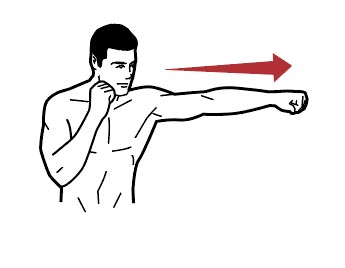The truth is: your first few sparring sessions can make or break your boxing journey. According to coaches, the difference between fighters who stick with boxing and those who quit often comes down to their early sparring experiences.
I’ve seen countless beginners make the same sparring mistakes that hold them back – but I’ve also seen how quickly the right mindset and techniques can speed up progress.
These seven sparring tips aren’t complicated theory – they’re straightforward tactics that work immediately, even if you’ve only been training for a month or two. Apply them in your next sparring session, and you’ll immediately feel more confident, perform better, and actually enjoy the process.
1. Start Slow and Build Up
The biggest mistake beginners make is going too hard, too soon. Boxing isn’t about proving how tough you are by taking unnecessary punishment. When you start sparring, your main goal should be learning, not winning.
Find partners who match your experience level. Someone with years of experience might be skilled enough to work with you safely, but fighters just a bit more advanced than you often make the best partners. They’ll push you without overwhelming you.
Before the bell rings, have a quick conversation about intensity. There’s nothing weak about saying, “Let’s go technical at about 40-50% power.” Good sparring partners will respect this and match your pace.
If you’re gasping for air, getting hit cleanly with every exchange, or reverting to wild swinging, the intensity is too high for learning. Dial it back and focus on technique first. The power will come naturally later.
How to implement this: Start with specific drills like completely technical rounds or defense-only rounds where your partner throws and you focus solely on blocking and slipping. These controlled scenarios let you work on specific skills without the pressure of full sparring. As you get comfortable, gradually increase the intensity and work toward pushing a bit harder in sparring.
2. Breathe Through Everything
Most beginners hold their breath while punching and defending. This is a natural response to stress, but it will drain your energy faster than anything else.
Make conscious breathing your priority. Exhale sharply with each punch you throw—this not only helps with power but prevents you from holding your breath. When you’re not punching, keep a steady breathing rhythm going.
A simple rule: breathe out when you’re active (punching), breathe in when you’re less active (moving, defending). This natural pattern will become automatic with practice.
When you feel yourself getting winded, use small moments between exchanges to take a deeper breaths and get your breathing back to normal. Good boxers know how to find these tiny recovery windows without looking tired or backing up excessively.
Practice this now: Even before your next sparring session, work on your breathing during bag work and shadow boxing. Make a “tsss” sound when throwing punches to ensure you’re exhaling. After a few sessions of conscious practice, proper breathing will start becoming natural even under pressure.
3. Keep Your Hands Up, Period

This sounds obvious, but watch any beginner sparring session and you’ll see hands dropping everywhere. Your guard is your first line of defense and should become the standard position your hands return to.
The mistake isn’t just lowering your hands when tired—it’s not bringing them back after throwing punches. Practice these return paths when doing bag work so it becomes automatic in sparring.
Your guard should let you see your opponent while protecting your chin and temple. Also, keeping your elbows tucked protects your body. This position might feel tiring at first, but your shoulders will adapt quickly.
Even professional fighters get caught when they drop their hands. The difference is they’ve earned the right to take calculated risks through years of experience. As a beginner, keeping your hands up consistently should be non-negotiable.
Make it automatic: Next time you’re on the heavy bag, pause after every combination and check your hand position. Are your hands back in guard? Make this check part of your routine until returning to guard becomes as natural as the punches themselves. Some gyms have beginners hold tennis balls against their temples while shadow boxing—you drop a ball, you do pushups. These kinds of drills build the guard habit quickly.
Read More: How to Get Into a Boxing Stance
4. Use Your Jab Constantly
The jab is the most important punch for beginners. It’s your long-range weapon and the safest punch to throw. A good jab will set up everything else in your arsenal.
Use your jab to control distance. When an opponent starts getting too close for comfort, a stiff jab will disrupt their forward momentum. This gives you time to reset or move to a better position.
Simple combinations starting with the jab like jab-cross or jab-jab-hook are more effective than wild hooks and uppercuts. These basic combinations should make up 80% of your offense as a beginner.
The defensive jab is underrated. Throwing a jab as your opponent steps in will interrupt their rhythm and make them hesitate. Even if it doesn’t land clean, it serves as an obstacle they have to deal with.
Jab constantly to get your opponents to fear the jabs. This will help you control the pace and works very well with feints when you get more advanced.

Developing your jab: Work on throwing your jab from different positions—while stepping forward, while moving back, after slipping a punch. A versatile jab that you can throw from any position is your best weapon. Focus on speed and accuracy first—power will develop naturally as your get better.
5. Move After You Punch
Standing still after throwing punches is basically asking to get countered. Yet this is exactly what most beginners do—they plant their feet, throw a combination, and then admire their work while getting hit in return.
After throwing a combination, make it a habit to immediately take a small step to either side or just move your head. This simple adjustment will make you significantly harder to hit and put you in position for the next exchange.
You don’t need fancy footwork—just a basic step to your left or right after punching. This creates angles that make your punches more effective and your opponent’s counters less likely to land.
When you find yourself backed against the ropes, don’t just cover up. Pivot to either side to escape rather than trying to push straight forward against your opponent’s momentum.
Simple drill to practice: On the heavy bag, throw a 1-2 combination, then immediately step to the right. Throw another 1-2, then step to the left. Make this movement pattern second nature on the bag, and it will carry over to your sparring. Start slow and deliberate, gradually increasing your speed as the movement becomes natural.
Read More: Boxing Footwork Drills and Moves
6. Stay Relaxed Under Pressure
Tension is your enemy in boxing. When you’re tense, you punch slower, move awkwardly, and get tired quickly. Yet the natural response to pressure is to tighten up.
Develop a “loose but ready” mindset. Your core should be engaged, but your shoulders, arms, and legs should remain relatively relaxed until the moment of impact.
When you feel yourself getting tense (and you will), take a small step back and shake out your arms for just a second. This brief reset can help you break the tension-fatigue cycle.
Look for small moments between exchanges to drop extra tension. Even experienced fighters aren’t “on” 100% of the time—they know how to find micro-moments of relaxation that add up over a fight.
Tension check: Between rounds, assess your body for tension. Common places beginners hold unnecessary tension: shoulders, calves, and grip. Roll your shoulders, relax your calves, and open and close your fists between rounds to release this tension. Eventually, you’ll learn to spot and release tension during the action itself.
7. Learn Something Every Round

Every sparring session should make you better. After sparring, ask yourself simple questions: What’s working? What’s not working? What is my opponent doing that’s giving me trouble?
Make small, specific adjustments based on what you observe. Maybe you need to slip to the outside of their jab instead of the inside, or perhaps you need to follow up your jab with a right hand more quickly.
The fighters who progress fastest aren’t focused on “winning” sparring—they’re focused on improving specific aspects of their game.
You should think about sparring not as a competition but as a chance to learn from your opponents and learn new tricks for yourself.
After sparring, take a few mental notes about what you learned. These observations, collected over time, will become the foundation of your unique boxing style.
Improvement system: Before sparring, decide on one specific focus area—like keeping your right hand up after throwing a jab, or moving to the right after combinations. Having this singular focus makes learning more manageable than trying to improve everything at once. After the session, spend just 2 minutes writing down what worked and what didn’t. This simple practice will dramatically speed up your development.
Conclusion
These seven sparring tips might seem simple, but they’re exactly what will separate you from other beginners in the gym. Boxing isn’t about complicated techniques—it’s about mastering the basics and executing them under pressure.
By starting slow, breathing properly, keeping your hands up, using your jab, moving after punching, staying relaxed, and learning from every round, you’ll build a solid foundation that will serve you through your entire boxing journey.
Remember that everyone was a beginner once—even world champions. The fighters who progress fastest aren’t necessarily the most talented, but the ones who approach sparring intelligently. Apply these concepts in your next session, and you’ll immediately notice the difference in both your performance and your confidence.



